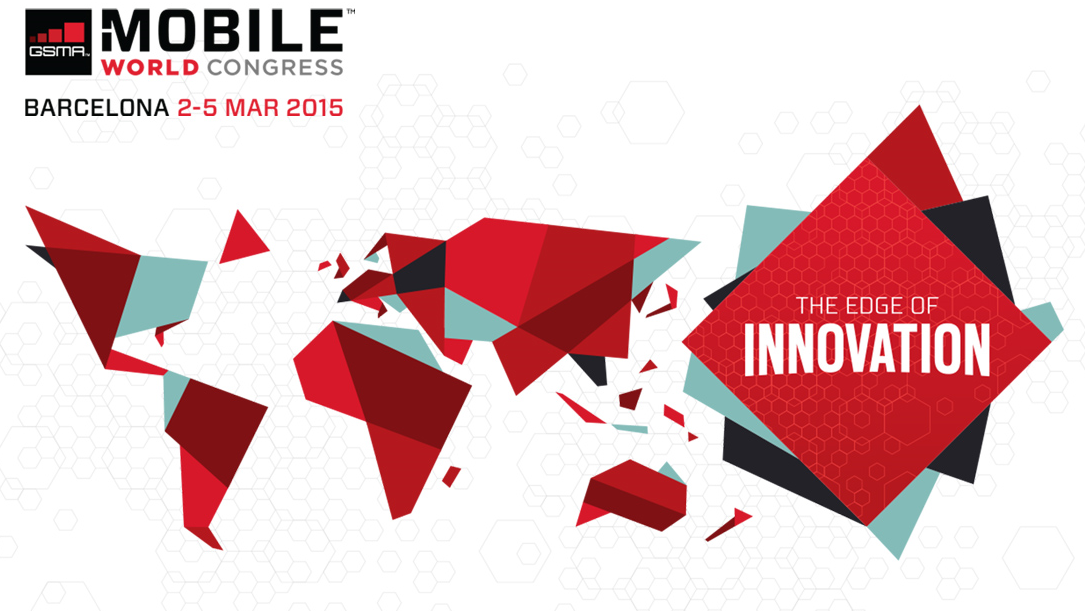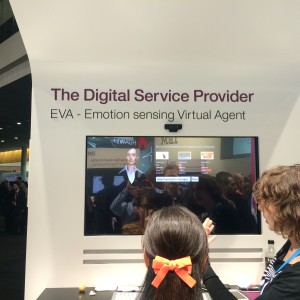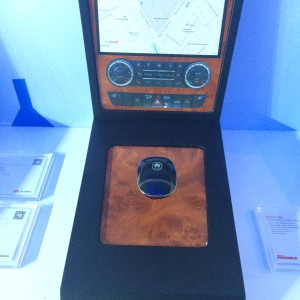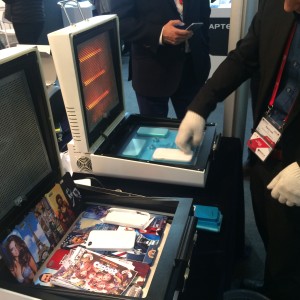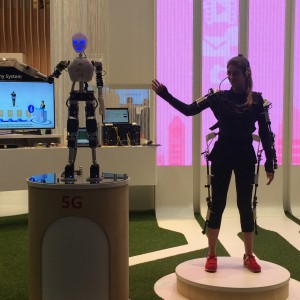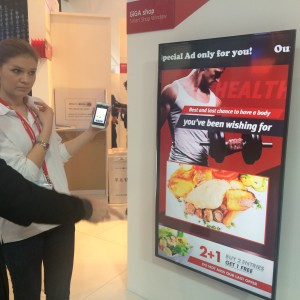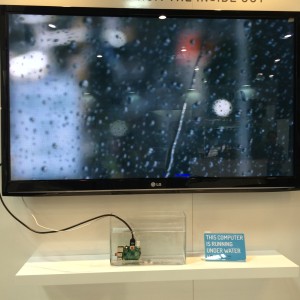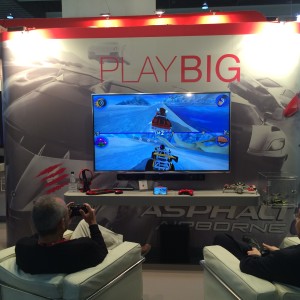Virtual Reality and Gaming
One of the most surprising announcements at MWC15 was the
HTC Vive VR headset. While the exact technical specs and pricing are still a bit of a mystery, HTC’s rationale to partner with Valve is not. Today, we visited with Jeff Gattis, HTC’s executive marketing director, to get his take on the partnership. According to Gattis, it all comes down to credibility and community—specifically, the credibility Valve has earned in building their Steam VR platform and the community of over 110MM users. With a great VR standard, a solid network of content developers, and a massive global audience, The HTC Vive is well-positioned to be the first widely adopted VR headset.
Global Representation
One of our favorite activities at Mobile World has been scoping out the various country pavilions—it’s a start up EPCOT, and we love the ingenuity on display. While Germany, France, and host country Spain all had solid showings, Norway stole the show, particularly companies like:
- Elliptic Labs: Gesture-based control for the smartphone.
- Thinfilm: Print-based approach to electronics brings digital interactivity (through NFC) to physical objects.
- Nordic Semiconducters: Chipsets that power proximity marketing solutions like BLE beacons from well-know providers like as Estimote, Kontakt.io and Roximity. Their nRF51 series chipset also powers products like smart lights, wireless keyboards, and the Adidas FIT SMART wristband tracker.
5G Connecting the Future
The promise of 5G—a new wireless network standard that is expected be implemented by 2020—is of course more bandwidth (faster speeds) and lower latency (gamers rejoice). A few of the reasons why we’re excited about 5G is because this new standard has the ability to power new experiences such streaming VR, self-driving cars, and a plethora of connected devices, which are expected to number upwards of 50B by 2020. Companies demoing 5G inspired experiences at MWC15 include Ericsson with Volvo and Telstra, Huawei & Japanese mobile service provider NTT Docomo, and Alerta & China Mobile.
